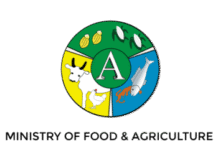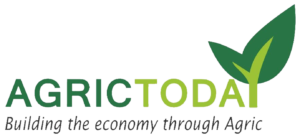Compared to other regions in the world, statistics show that Africa has the lowest rate of COVID-19-related deaths. Despite this, the Food and Agriculture Organization reports that the pandemic has disrupted Africa’s agri-food system, exacerbating food insecurity in several regions across the continent. Let’s take a closer look at a few key regions and the various challenges in the current state.
The World Food Programme estimates that more than 40 million East Africans are likely to experience chronic food shortages, due to COVID-19. In Nigeria and Senegal, for example, the majority of farmers experienced post-harvest losses, with up to 40 percent of fresh produce perishing before reaching consumers; this included items like dairy products, fruits, and vegetables. These losses were partially attributed to border closures and national lockdowns enforced by African governments to prevent the geographical diffusion and spread of the virus. Inadequate storage facilities and poor transportation networks have only exacerbated and further aggravated food losses in the region. And in Kenya, small-scale farmers have been unable to deliver products to markets because of high transportation costs.
At a higher level, the pandemic has ravaged the overall socio-economic environments of many agriculture-based economies. Evidence shows that over the last year, post-harvest losses of fresh fruits and vegetables have more than doubled across Africa, due to inefficient infrastructures to extend the storage life of produce.
According to the Rockefeller Foundation, uncontrolled post-harvest losses in Africa could cause approximately 400 million low-income farmers and value chain actors (transporters, vendors, processors, etc.) to fall into abject poverty. This suggests that the virus’s sustained transmission, alongside a lack of pragmatic measures to prevent food losses, may have significant implications for farmers’ livelihoods and food supply.
Moreover, Africa’s consumer population is projected to double within the next three decades. A large portion of this population boom will be in urban centers, suggesting that strengthening post-harvest systems to limit food losses will be critical for Africa’s food supply chains that have been disrupted during the pandemic.
This means that after the pandemic subsides, preventing post-harvest losses will be vital to (1) boost food supplies for consumers; (2) increase farmers’ incomes; and (3) revive economies depredated during the coronavirus outbreak. As the pandemic continues to spread in Africa, a lack of effective measures to mitigate food losses will have severe implications for the agriculture-dependent households – many of whom lack social protection.
Here is a recommended strategy for managing this current situation.
Avoiding food losses during and post-pandemic: What African governments need to do.
Governments and policy-makers must prioritize food-loss prevention.
As the continent tackles the COVID-19 crisis, it should not lose sight of post-harvest management challenges that confront small-scale producers. In past decades, Africa’s policy responses to food security challenges have mainly focused on increasing food production, while interventions addressing post-harvest challenges have received limited policy attention. In particular, fewer resources have been invested in tackling post-harvest losses of vegetables, fruit, and dairy products that are vulnerable to food spoilage. A recent study indicates that although considerable investment has been put forward in stopping losses on maize and other staple food crops, less than 1 percent of agriculture development funding was allocated to prevent post-harvest losses of fruits and vegetables.
As a result, the majority of small-scale producers lacked basic knowledge and training on proper handling of freshly harvested produce, which led to high incidences of food losses on fruits and vegetables in high demand within and outside the continent. In the long run, a significant increase in budgetary support on the post-harvest management process will be critical. This should also be complemented with the deployment of proper storage facilities, such as cold rooms for products that are most vulnerable to spoilage during transport delays, lockdowns, and border closures. These efforts will strengthen food supply chains, while also helping small-scale producers preserve their food products to sell when the market conditions are favorable.
Investment in post-harvest extension advisory services and education is paramount.
In the face of the COVID-19 crisis, appropriate handling of food products before and after harvest is critical to reducing the risk of food-borne related diseases. Unfortunately, state-led agricultural extension and advisory services for smallholders have been significantly reduced across Africa, due to fiscal constraints. This situation has caused resource-poor farmers to resort to ineffective, unhygienic post-harvest practices that raise food safety concerns.
In this regard, comprehensive post-harvest educational programs to help farmers and food distribution actors adopt food safety practices and cope with the growing demand for quality food products from consumers will be crucial. Likewise, as extension visits to farmers could be limited during the pandemic, designing and implementing online post-harvest educational programs that capitalize on mainstream media could have a profound impact. This can involve the use of community radios, mobile phone text messages, and internet-based communication platforms
like WhatsApp, which has wider penetration to farmers and food suppliers in several parts of Africa, who may lack reliable internet access.
Technology barriers to food loss prevention must be overcome.
Access to and ownership of efficient food-loss reduction technologies remains one of the greatest challenges facing Africa’s smallholders, with rural areas in a worse position, due to financial constraints.
Recently, collaborative efforts between state and non-state actors to push the uptake of low-tech and affordable food loss reduction technologies for resource-poor farmers have yielded positive results.
In Rwanda, for instance, where more than one million small-scale farmers earn a living from growing horticultural produce, a partnership between the government of Rwanda and Inspira Farms, a United Kingdom (UK) energy-efficient company, is helping small-scale growers cut down massive food losses by installing low-cost solar-powered cold rooms at farm-level. In 2019, with the World Bank’s financial support, Inspira Farms deployed 10 cold chain storage facilities that served more than 100,000 horticultural producers living in off-grid locations.
Likewise, in Tanzania, Kenya, and Nigeria, the Rockefeller Foundation’s YieldWise program has been helping smallholders tackle post-harvest losses. Since its launch in 2016, the initiative has profoundly impacted more than 300,000 farmers and significantly reduced losses on maize, mango, and fresh tomatoes by 30 percent.
Despite these gains, concerns over the cost of technologies, low awareness, and limited capacity to fabricate the facilities locally have left millions of resource-poor farmers unable to access potential technologies like solar-powered cold rooms and metal silos.
For example, in Tanzania and Kenya, local prices for metal silos are reported to be four times higher than market prices for “traditional gunny sacks,” commonly used by small-scale farmers in the region.
In this regard, creating an enabling economic environment that will stimulate and incentivize the uptake of low-cost food loss reduction technologies to marginalized farmers is vital. This also is contingent upon a healthy coalition between state, non-government organizations, and the private sector.
More importantly, scaling up post-harvest interventions and sustaining their successes will require paying close attention to farmers’ needs and designing a financing model that suits low-income farmers’ socio-economic conditions.
The development of home-grown post-harvest innovations should be encouraged.
Introducing agriculture innovations attuned to the target population’s socio-economic conditions has proven to be practical and critical, especially for poor and marginalized farmers, who are financially constrained.
In Ghana, a local start-up company called SESI Technologies is helping maize farmers limit storage losses by measuring moisture before storage with its low-cost meter GrainMate, which was invented in 2018.
The start-up agriculture-technology company has benefited hundreds of farmers suffering maize storage losses each year. Supporting further development and broader dissemination of promising home-grown post-harvest innovations like GrainMate could significantly impact millions of smallholders that suffer food losses in Africa.
This should be embedded within specific policies and institutional support that strengthen local innovators’ capacity and growth potential toward developing agricultural technologies, services, and products that are suitable for low-income farmers.
As Africa awaits vaccines to stop the widespread diffusion of the novel coronavirus, the pandemic offers a reminder for African state and non-state actors alike to address supply chain deficiencies and enforce policies that will push for wider uptake of modern food loss reduction technologies to the marginalized and resource-poor farmers.
Going forward, supporting the deployment of innovations and technologies that improve storage conditions of perishable crops will mark significant progress in reducing farm-level and on-transit food losses, while also preserving or extending produce shelf-life when supply chains collapse.
Source: Agrilinks.org








